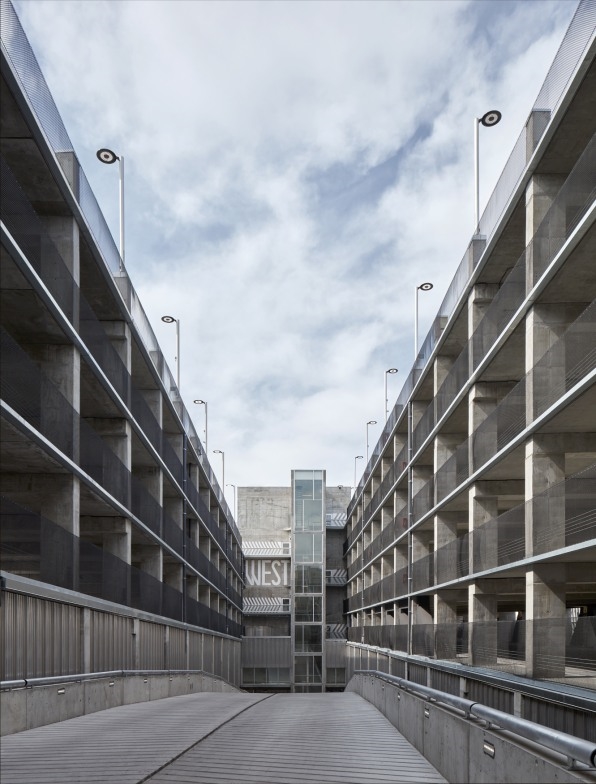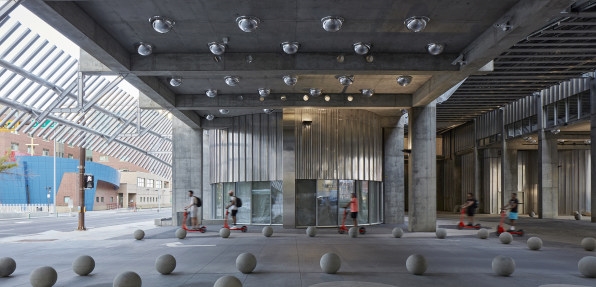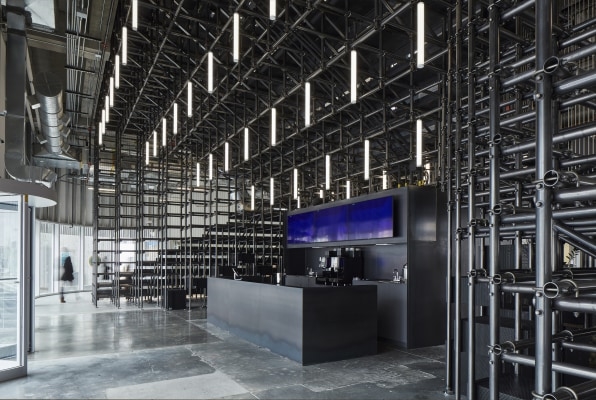Today, it’s a multistory parking lot. Tomorrow, it could be your new home
Most parking lots are far from architectural masterpieces. But what’s even more insidious about these bleak concrete boxes is the vast amount of space they steal from our cities to create a nearly-permanent repository for cars.
In Calgary, Alberta, however, two architecture firms have come up with a pretty snazzy solution in the form of a convertible parking lot. Today, the 9th Avenue Parkade can fit 510 cars, but tomorrow—or more likely in 20 to 30 years—the building can easily be reimagined as a 600-person office or a 50-unit residential building.

The building was designed by two architecture firms—5468796 and Kasian—and was recently shortlisted for this year’s World Architecture Festival awards. Commissioned by the City of Calgary and the Calgary Parking Authority, the building was opened last year, but the first two floors have already been given over to an innovation center that can house up to 1,000 people, while the top floor has become a popular venue for wedding shoots.
The key to such an adaptive building lies in its hollow, pill-shape footprint. Most multistory parking lots have you drive up in a spiral ramp until you find a spot (which, by virtue of Murphy’s law, is always at the top!). Except, those ramps can be as steep as 5 degrees, which isn’t exactly ideal when those are the floors of your living room. As 5468796’s founding partner Sasa Radulovic points out, such ramps are also “very expensive to build, require a lot of concrete to do what they need to do, and they’re completely unconvertible.”

So instead, the architects designed a long, oval building that spans about 500 feet from one end to the other. You still have to drive up to get from one floor to another, but the span is much longer, flattening the gradient down to about 1% to 2%. According to Radulovic, this kind of gradient is quite common in older office buildings. “Show me a building in Brooklyn that doesn’t have sloped floors,” he says with a laugh, noting that the floors in his own firm’s Winnipeg, Manitoba, office are as steep as 4% in some places. (For residential use, the floors would be topped with another finish to achieve a completely flat surface.)
In the parking lot’s current iteration, cars enter through an opening at the center of the building and drive up a ramp that cuts through an airy courtyard at the center of the “pill.” The ramp—bolted in place so it can easily be removed later—bypasses the first two floors (where the innovation center is located) and connects straight to the third floor. From then on, cars slowly drive up the oval spiral.

Whether or not the building will ever be converted into something other than a parking lot remains unclear, but if and when that happens, Radulovic says it could take about a year to convert the entire building, or it could happen gradually: levels six and seven, for example, could be turned into housing whenever, and cars could still access floors three to five through the removable ramp. But even if the parking lot never ends up giving up its core tenant, namely the car, the 9th Avenue Parkade provides an intriguing model for hybrid architecture that looks to the future—and looks cool in the present, too.
(24)


